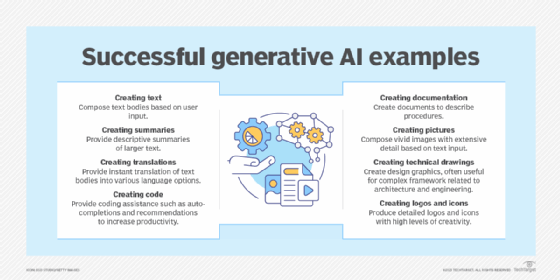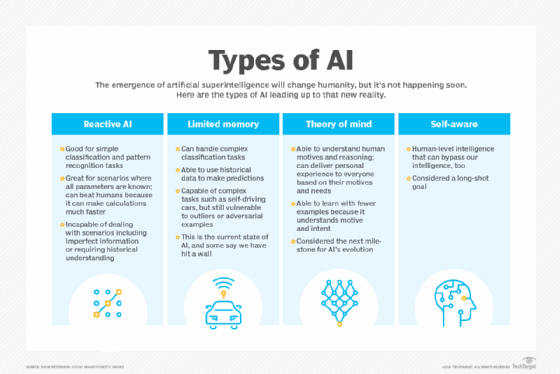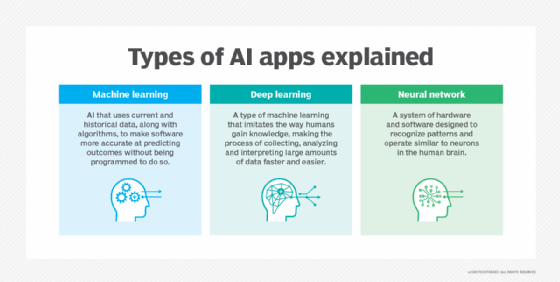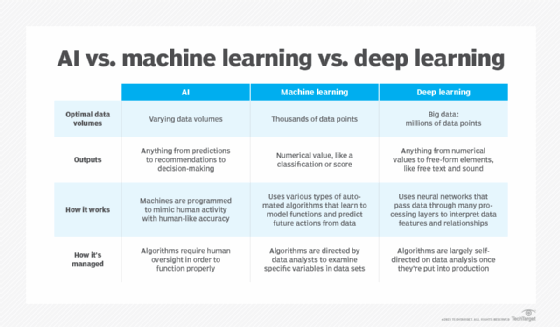Schneider Electric – Schneider Electric launches AI-powered home energy management feature for Wiser Home
Schneider Electric, the leader in the digital transformation of energy management and automation, today announced its artificial intelligence-powered feature is now live on the Wiser Home app.
Recently recognized as the world’s most sustainable company, Schneider Electric continues to lead in smart home energy management with cutting-edge solutions to support homeowners, homebuilders, and electrical installers.
Schneider’s new feature is a market first, providing AI-optimized energy management of two of the biggest power loads in the home – water heaters and electric vehicle chargers – via a single app, Wiser Home. Wiser Home is Schneider Electric’s home energy management solution that provides energy monitoring, control, and optimization. The new feature, developed entirely in-house by Schneider Electric, optimizes energy bills through automated load management and predictive energy consumption scheduling tailored to users’ lifestyles.
As a predictive algorithm, the AI-powered feature learns from user habit data and preferences, real-time weather forecasts, tariff data, power contract limits and solar production capability to optimize energy saving by shifting two of the biggest power loads in the home. The feature is based on proprietary technology developed entirely in-house by Schneider Electric; all user data is kept and managed by Schneider with no external data transfers so users can rest assured that their data is secure.
Buildings account for 37% of global operational energy and process-related CO2 emissions, with homes accounting for approximately 20% of this. As more people address their home emissions through electrification and New Energy Landscape technology, such solar panels, EV chargers and heat pumps, home energy management systems are more complicated than ever. In addition to this, there is the rise of dynamic tariffs that aim to incentivize off-peak energy consumption as energy prices have increased to record levels. Facing this complicated reality, Schneider’s new AI-powered solution addresses the mental burden homeowners have when aiming to optimize their energy use and reduce their energy bills.
The feature can determine and anticipate the cost-effective periods to power your EV charger or heat your water tank thanks to its weather forecasting and dynamic tariff capabilities. It can align EV charging and water heating with cost-effective periods while considering daily needs, for example travel times and distances or the daily number of showers for family members, to make sure your EV and hot water is ready to go when it is needed.
Homeowners can control how the AI feature is deployed in their home. Schedules and forecasts can be easily adjusted to either pause to avoid wasted energy consumption during vacations for example, or the scheduled consumption can be overridden to immediately begin EV charging or water heating.
The new feature particularly benefits households with solar panels. The AI algorithm learns from solar energy production and utilizes weather data to estimate solar production availability and takes this into account when planning how to shift loads throughout the day, including which loads run whilst energy is being produced.
In lab testing of this AI solution carried out by Schneider, homeowners with solar panels saw predicted annual savings of between €400-500, and homes without solar panels saw savings between €100-150. This simulation was based on French market data, considering two loads – EV charger and water heater – and two sources – grid and solar. Actual savings may differ from estimated savings depending on home installation and energy provider.
Michael Lotfy Gierges, Executive Vice President, Home & Distribution Division, Schneider Electric, commented: “With record energy costs and record temperatures, homeowners are looking for tools and technology that can help them better manage their energy consumption and cut their energy bills. Artificial intelligence provides an entirely new level of optimization that can empower homeowners to be more efficient and save money, without compromising on comfort.”
Mr. Gierges added: “Here at Schneider Electric, we are proud to be at the forefront of developing innovative solutions that help drive efficiency and electrification, always with the guiding principle of working towards a more sustainable future. Our new AI feature is a prime example of this and addresses a real consumer need to simplify optimized management of their household energy consumption.”
This new feature is available to Wiser Home users in Spain, Portugal, France, Germany, and Austria who have the Wiser Hub, Schneider Electric PowerTag energy sensors, a Schneider EV charger (EV Link Home Smart, Schneider Charge or EV Socket) and Power micromodule (water heater controller) installed. Schneider Electric will continue to invest in this technology, launching it as a premium feature next year covering larger loads in the home to help home energy use be as efficient as possible.
SourceSchneider Electric
EMR Analysis
More information on Schneider Electric: See the full profile on EMR Executive Services
More information on Peter Herweck (Chief Executive Officer, Schneider Electric): See the full profile on EMR Executive Services
More information on Michael Lotfy Gierges (Executive Vice President, Global Home & Distribution Division, Schneider Electric): See the full profile on EMR Executive Services
More information on Wiser (Schneider Electric’s Sustainable and Connected Homes Solution for Homeowner): https://www.se.com/ww/en/home/smart-home/wiser/homeowner.jsp + Wiser is a scalable solution for lighting, shutter, air conditioning, or appliance control. Get started with a simple function and enrich the system as you go for greater peace of mind. Wiser Smart Home solution is completely integrated with the traditional Schneider Electric wiring device ranges, so you do not need to change your installation. Start building your smart home by replacing only a few switches with their connected version.
- Wiser App:
- The current operational version of WISER provides a highly functional solution with information and substance identification capabilities on over 500 substances. It operates in a stand-alone mode on Microsoft® Windows® PCs, Apple iOS devices (iPhone, iPad, and iPod touch), and Google Android devices.
EMR Additional Notes:
- AI – Artificial Intelligence:
- https://searchenterpriseai.techtarget.com/definition/AI-Artificial-Intelligence +
- Artificial intelligence is the simulation of human intelligence processes by machines, especially computer systems.
- As the hype around AI has accelerated, vendors have been scrambling to promote how their products and services use AI. Often what they refer to as AI is simply one component of AI, such as machine learning. AI requires a foundation of specialized hardware and software for writing and training machine learning algorithms. No one programming language is synonymous with AI, but well a few, including Python, R and Java, are popular.
- In general, AI systems work by ingesting large amounts of labeled training data, analyzing the data for correlations and patterns, and using these patterns to make predictions about future states. In this way, a chatbot that is fed examples of text chats can learn to produce lifelike exchanges with people, or an image recognition tool can learn to identify and describe objects in images by reviewing millions of examples.
- AI programming focuses on three cognitive skills: learning, reasoning and self-correction.
- What are the 4 types of artificial intelligence?
- Type 1: Reactive machines. These AI systems have no memory and are task specific. An example is Deep Blue, the IBM chess program that beat Garry Kasparov in the 1990s. Deep Blue can identify pieces on the chessboard and make predictions, but because it has no memory, it cannot use past experiences to inform future ones.
- Type 2: Limited memory. These AI systems have memory, so they can use past experiences to inform future decisions. Some of the decision-making functions in self-driving cars are designed this way.
- Type 3: Theory of mind. Theory of mind is a psychology term. When applied to AI, it means that the system would have the social intelligence to understand emotions. This type of AI will be able to infer human intentions and predict behavior, a necessary skill for AI systems to become integral members of human teams.
- Type 4: Self-awareness. In this category, AI systems have a sense of self, which gives them consciousness. Machines with self-awareness understand their own current state. This type of AI does not yet exist.
- Machine Learning (ML):
- Developed to mimic human intelligence, it lets the machines learn independently by ingesting vast amounts of data, statistics formulas and detecting patterns.
- ML allows software applications to become more accurate at predicting outcomes without being explicitly programmed to do so.
- ML algorithms use historical data as input to predict new output values.
- Recommendation engines are a common use case for ML. Other uses include fraud detection, spam filtering, business process automation (BPA) and predictive maintenance.
- Classical ML is often categorized by how an algorithm learns to become more accurate in its predictions. There are four basic approaches: supervised learning, unsupervised learning, semi-supervised learning and reinforcement learning.
- Deep Learning (DL):
- Subset of machine learning, Deep Learning enabled much smarter results than were originally possible with ML. Face recognition is a good example.
- DL makes use of layers of information processing, each gradually learning more and more complex representations of data. The early layers may learn about colors, the next ones about shapes, the following about combinations of those shapes, and finally actual objects. DL demonstrated a breakthrough in object recognition.
- DL is currently the most sophisticated AI architecture we have developed.
- Computer Vision (CV):
- Computer vision is a field of artificial intelligence that enables computers and systems to derive meaningful information from digital images, videos and other visual inputs — and take actions or make recommendations based on that information.
- The most well-known case of this today is Google’s Translate, which can take an image of anything — from menus to signboards — and convert it into text that the program then translates into the user’s native language.
- Machine Vision (MV):
- Machine Vision is the ability of a computer to see; it employs one or more video cameras, analog-to-digital conversion and digital signal processing. The resulting data goes to a computer or robot controller. Machine Vision is similar in complexity to Voice Recognition.
- MV uses the latest AI technologies to give industrial equipment the ability to see and analyze tasks in smart manufacturing, quality control, and worker safety.
- Computer Vision systems can gain valuable information from images, videos, and other visuals, whereas Machine Vision systems rely on the image captured by the system’s camera. Another difference is that Computer Vision systems are commonly used to extract and use as much data as possible about an object.
- Generative AI (GenAI):
- Generative AI technology generates outputs based on some kind of input – often a prompt supplied by a person. Some GenAI tools work in one medium, such as turning text inputs into text outputs, for example. With the public release of ChatGPT in late November 2022, the world at large was introduced to an AI app capable of creating text that sounded more authentic and less artificial than any previous generation of computer-crafted text.
- https://searchenterpriseai.techtarget.com/definition/AI-Artificial-Intelligence +




- Edge AI Technology:
- Edge artificial intelligence refers to the deployment of AI algorithms and AI models directly on local edge devices such as sensors or Internet of Things (IoT) devices, which enables real-time data processing and analysis without constant reliance on cloud infrastructure.
- Simply stated, edge AI, or “AI on the edge“, refers to the combination of edge computing and artificial intelligence to execute machine learning tasks directly on interconnected edge devices. Edge computing allows for data to be stored close to the device location, and AI algorithms enable the data to be processed right on the network edge, with or without an internet connection. This facilitates the processing of data within milliseconds, providing real-time feedback.
- Self-driving cars, wearable devices, security cameras, and smart home appliances are among the technologies that leverage edge AI capabilities to promptly deliver users with real-time information when it is most essential.
- Carbon Dioxide (CO2):
- Primary greenhouse gas emitted through human activities. Carbon dioxide enters the atmosphere through burning fossil fuels (coal, natural gas, and oil), solid waste, trees and other biological materials, and also as a result of certain chemical reactions (e.g., manufacture of cement). Carbon dioxide is removed from the atmosphere (or “sequestered”) when it is absorbed by plants as part of the biological carbon cycle.
- Biogenic Carbon Dioxide (CO2):
- Biogenic Carbon Dioxide (CO2) and Carbon Dioxide (CO2) are the same. Scientists differentiate between biogenic carbon (that which is absorbed, stored and emitted by organic matter like soil, trees, plants and grasses) and non-biogenic carbon (that found in all other sources, most notably in fossil fuels like oil, coal and gas).
- Carbon Capture and Storage (CCS):
- CCS involves the capture of carbon dioxide (CO2) emissions from industrial processes. This carbon is then transported from where it was produced, via ship or in a pipeline, and stored deep underground in geological formations.
- CCS projects typically target 90 percent efficiency, meaning that 90 percent of the carbon dioxide from the power plant will be captured and stored.
- Decarbonization:
- Reduction of carbon dioxide emissions through the use of low carbon power sources, achieving a lower output of greenhouse gasses into the atmosphere.
- Carbon Footprint:
- There is no universally agreed definition of what a carbon footprint is.
- A carbon footprint is generally understood to be the total amount of greenhouse gas (GHG) emissions that are directly or indirectly caused by an individual, organization, product, or service. These emissions are typically measured in tonnes of carbon dioxide equivalent (CO2e).
- In 2009, the Greenhouse Gas Protocol (GHG Protocol) published a standard for calculating and reporting corporate carbon footprints. This standard is widely accepted by businesses and other organizations around the world. The GHG Protocol defines a carbon footprint as “the total set of greenhouse gas emissions caused by an organization, directly and indirectly, through its own operations and the value chain.”
- CO2e:
- CO2e means “carbon dioxide equivalent”. In layman’s terms, CO2e is a measurement of the total greenhouse gases emitted, expressed in terms of the equivalent measurement of carbon dioxide. On the other hand, CO2 only measures carbon emissions and does not account for any other greenhouse gases.
- A carbon dioxide equivalent or CO2 equivalent, abbreviated as CO2-eq is a metric measure used to compare the emissions from various greenhouse gases on the basis of their global-warming potential (GWP), by converting amounts of other gases to the equivalent amount of carbon dioxide with the same global warming potential.
- Carbon dioxide equivalents are commonly expressed as million metric tonnes of carbon dioxide equivalents, abbreviated as MMTCDE.
- The carbon dioxide equivalent for a gas is derived by multiplying the tonnes of the gas by the associated GWP: MMTCDE = (million metric tonnes of a gas) * (GWP of the gas).
- For example, the GWP for methane is 25 and for nitrous oxide 298. This means that emissions of 1 million metric tonnes of methane and nitrous oxide respectively is equivalent to emissions of 25 and 298 million metric tonnes of carbon dioxide.
- Carbon Credits or Carbon Offsets:
- Permits that allow the owner to emit a certain amount of carbon dioxide or other greenhouse gases. One credit permits the emission of one ton of carbon dioxide or the equivalent in other greenhouse gases.
- The carbon credit is half of a so-called cap-and-trade program. Companies that pollute are awarded credits that allow them to continue to pollute up to a certain limit, which is reduced periodically. Meanwhile, the company may sell any unneeded credits to another company that needs them. Private companies are thus doubly incentivized to reduce greenhouse emissions. First, they must spend money on extra credits if their emissions exceed the cap. Second, they can make money by reducing their emissions and selling their excess allowances.
- Geothermal Heating, Heat Pumps, Chillers, Hydronics & Heat Exchangers:
- Geothermal heating and cooling systems take advantage of the stable temperature underground using a piping system, commonly referred to as a “loop.” Water circulates in the loop to exchange heat between your home, the ground source heat pump, and the earth, providing geothermal heating, cooling, and hot water at remarkably high efficiencies.
- Heat pumps use electricity to transfer heat from a cool space to a warm space, making the cool space cooler and the warm space warmer. During the heating season, heat pumps move heat from the cool outdoors into your warm house. During the cooling season, heat pumps move heat from your house into the outdoors. Because they transfer heat rather than generate heat, heat pumps can efficiently provide comfortable temperatures for your home.
- The only difference between a heat pump and a chiller is that one is designed to remove heat from a space or process stream, making it cooler and rejecting heat to the environment, while the other is designed to extract heat from the environment and use it to provide useful heat.
- Hydronics are systems of heating or cooling that involves transfer of heat by a circulating fluid (such as water or vapor) in a closed system of pipes.
- Heat exchangers are used to transfer heat from one medium to another. These media may be a gas, liquid, or a combination of both. The media may be separated by a solid wall to prevent mixing or may be in direct contact. Heat exchangers are required to provide heating and/or cooling to meet a process requirement.
- In HVAC, Heat exchangers are used to transfer heat between the indoor and outdoor air streams while keeping them physically separated as a means of cooling the indoor air. In addition, heat exchangers can also be used to heat indoor air. These systems are called heat pumps.
- Grid, Microgrids, DERs and DERM’s:
- The power grid is a network for delivering electricity to consumers. The power grid includes generator stations, transmission lines and towers, and individual consumer distribution lines.
- The grid constantly balances the supply and demand for the energy that powers everything from industry to household appliances.
- Electric grids perform three major functions: power generation, transmission, and distribution.
- A microgrid is a small-scale power grid that can operate independently or collaboratively with other small power grids. The practice of using microgrids is known as distributed, dispersed, decentralized, district or embedded energy production.
- Smart Grid is any electrical grid + IT at all levels . Micro Grid is a group of interconnected loads and DERs (Distributed energy resources) within a clearly defined electrical and geographical boundaries witch acts as a single controllable entity with respect to the main grid.
- Distributed energy resources (DERs) are small-scale electricity supply (typically in the range of 3 kW to 50 MW) or demand resources that are interconnected to the electric grid. They are power generation resources and are usually located close to load centers, and can be used individually or in aggregate to provide value to the grid.
- Common examples of DERs include rooftop solar PV units, natural gas turbines, microturbines, wind turbines, biomass generators, fuel cells, tri-generation units, battery storage, electric vehicles (EV) and EV chargers, and demand response applications.
- Distributed energy resources management systems (DERMS) are platforms which helps mostly distribution system operators (DSO) manage their grids that are mainly based on distributed energy resources (DER).
- DERMS are used by utilities and other energy companies to aggregate a large energy load for participation in the demand response market. DERMS can be defined in many ways, depending on the use case and underlying energy asset.


